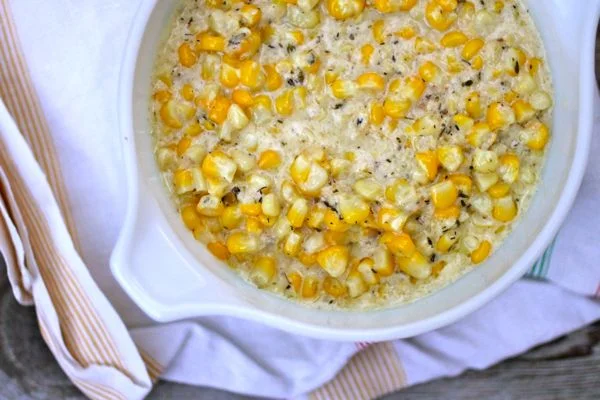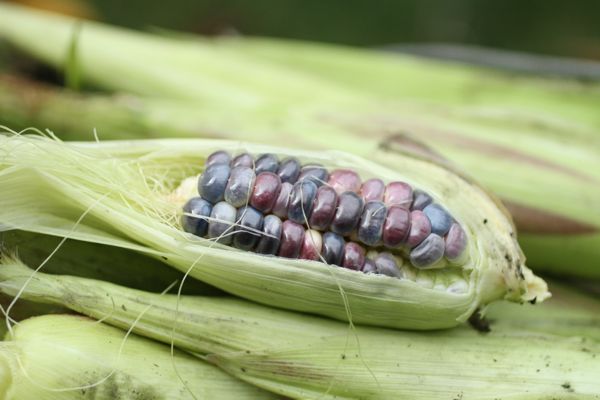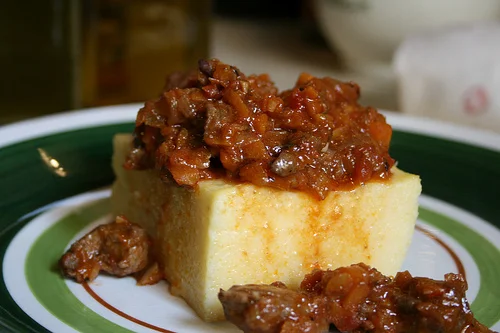how to make creamed corn (plus ramblings from an urban farmer)
When I was a little girl I ate creamed corn from a can---and loved it. It was a special creamy treat. Today, the nostalgia kicks in and I still crave this 'comfort-food' side dish; I especially love taking old recipes and re-inventing them. As an urban farmer and chef, how to make creamed corn means I grow my own corn (and in this case dry my own thyme), then wield my knives and pans to re-create this special dish.
If there is one thing I am learning to love about urban farming, it is the annual list of trials and errors. This is a healthy adjustment for me: I am a bit of an education nut and like to go to school to drill down on my topic of choice. I wanted to become a better cook, so I went to culinary school. I wanted to extend my repertoire of home food preservation, so I attended a class to earn my master certificate. I like to be 'schooled' aka pushed to learn a lot about a topic in the least amount of time. But no matter how hard I try to learn farming all at once---that simply isn't the way it works. I am not a master farmer. Nor a master gardener. I am not an expert in soil management or crop rotation and have yet to feel the intimate pulse of mother nature [as it pertains to planting and harvesting].
But I am learning.
And what seems to be the top lesson? I will never know it all. I will learn new things each year---make adjustments---then learn some more. Things I think I know will change, new pests will come and new battles won and lost (my cabbage never had a chance!). Since I cannot 'know it all' I am attempting to embrace this year upon year knowledge building (and patience with myself and my garden)... which makes me think of asparagus. I planted it last year: in the hopes that it will root and develop to be harvested 3 years from now.
There are failures and successes both by design and otherwise. Gardens---and urban farming plots---evolve. (And apparently so do urban farmers).
I didn't expect to have corn this year, but as it turns out: I did. Due to DIY renovations on our front and back yards, the 'plots' for my corn seeds weren't ready until end of July/beginning of August. In the PNW that is far, far too late to expect corn to grow to maturity. In the PNW (I learned from attempting to grow corn last year) we need to plant short-season corn. Since I planted the seeds late, I affectionately referred to them as 'ornamental corn' (a testament to setting low expectations: no doubt another lesson of urban farming).
We had a late start to our summer, but we also had a late start to our fall. This gave my corn a chance to at least grow ears and I am thrilled to say I 'harvested' corn---some as small as baby corn and others almost 'medium' in size. The fun? I had planted two varieties (testing for preferences) and one was a purple heirloom: it is gorgeous and will make my short list for next year's ground.
I love that even with small-plot farming, I am tied to seasonal food. Corn ripens and is plucked in the fall. Right now you can eat just-harvested kale, winter cabbage, beets and carrots. The fun is: figuring out what to do with the bounty. I like to eat produce while it is fresh, and preserve some for later (any combo. of drying, freezing, canning).
CORN is fantastic candidate for freezing, dehydrating, pressure canning, preserving in jars (follow any canning recipes/quantities very closely, as corn is not naturally acidic and therefore will be made safe with other ingredients such as citrus or citric acid, other acidic foods in the 'salsa' etc.).
I recently visited corn fields in Iowa. Want corn for dessert? Yes I did: corn ice cream with salted caramel sauce. But for dinner, my current favorite recipe for fresh corn is:
How to Make Creamed Corn
1/4 cup finely minced shallots 1 T butter (or combine with 1-2 tsp bacon grease if you have it) 2 tsp dried thyme good grinds of coarse salt & pepper 2/3 cup heavy cream corn kernels cut from 2 cobs of corn
Caramelize the shallots and seasonings over low/medium heat for 5-7 minutes. Add cream and let it simmer and thicken for 7-9 minutes. Add corn, stir to blend and cook 3-5 minutes.
I cannot help but add: the corn stalks, leaves and husks can be tossed in your compost pile. But first: let your chickens gnaw on the husks---they adore corn!









